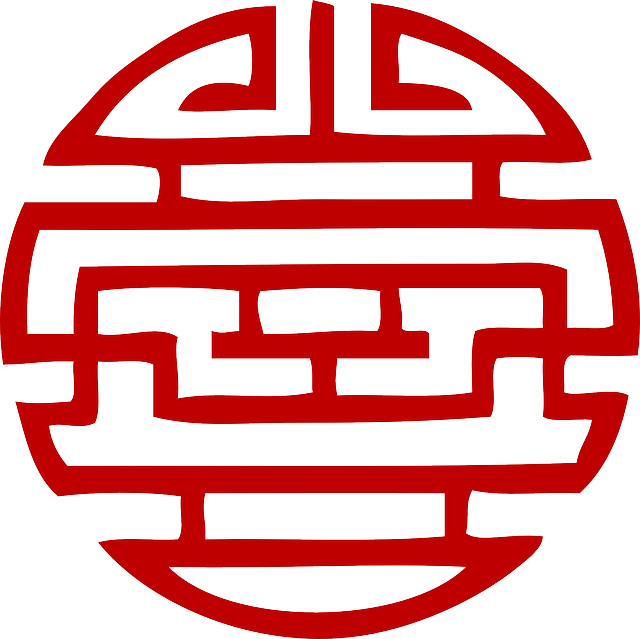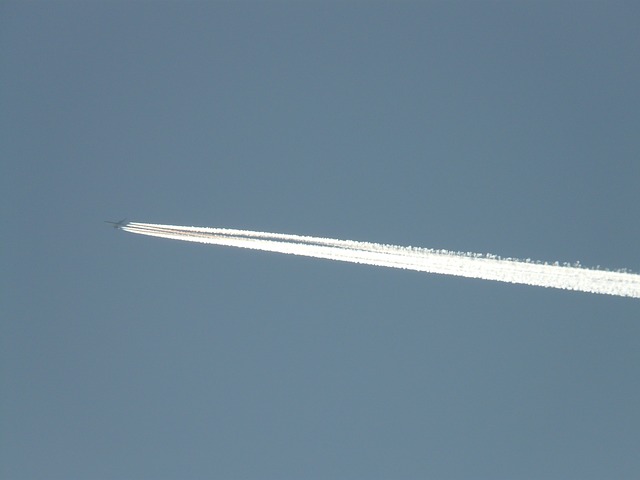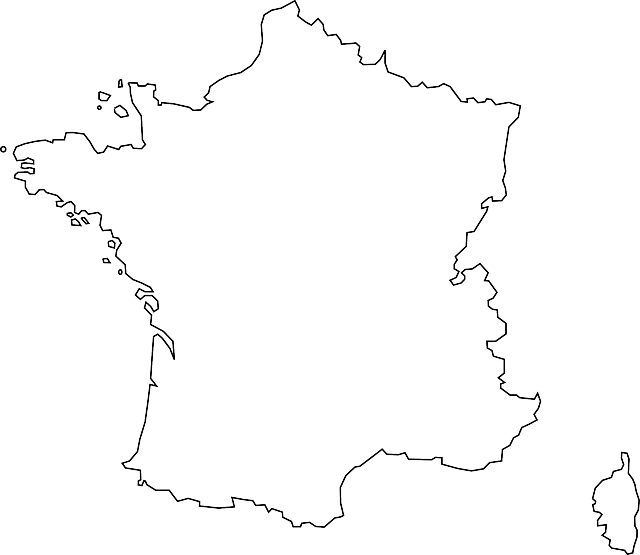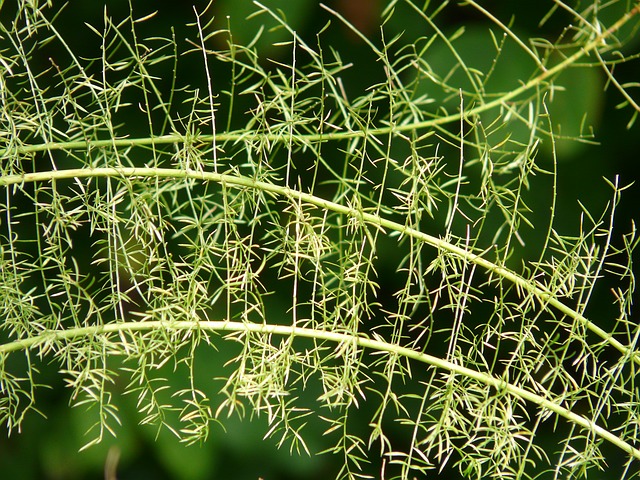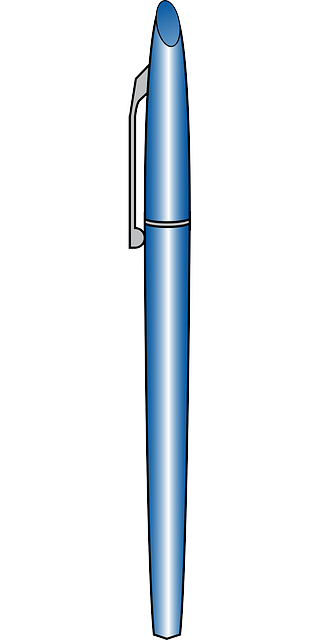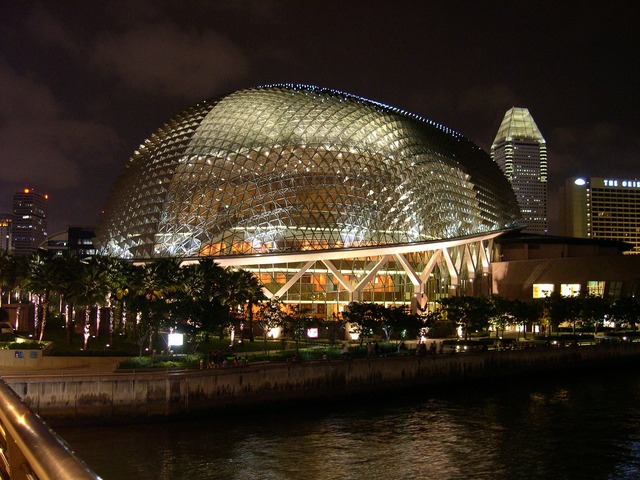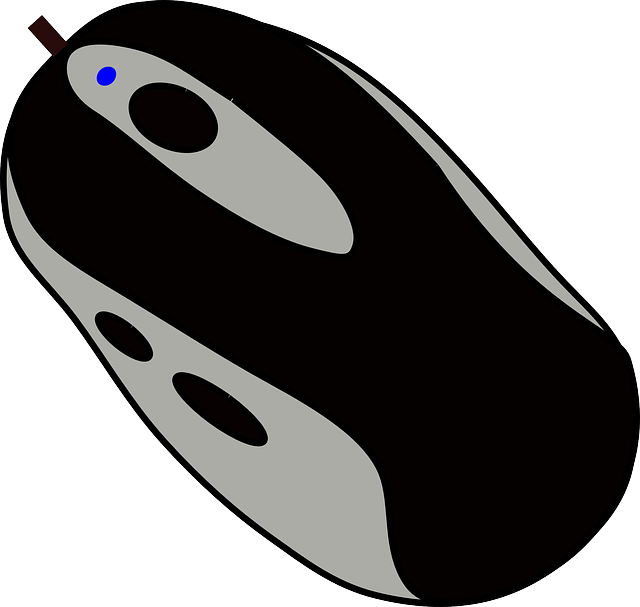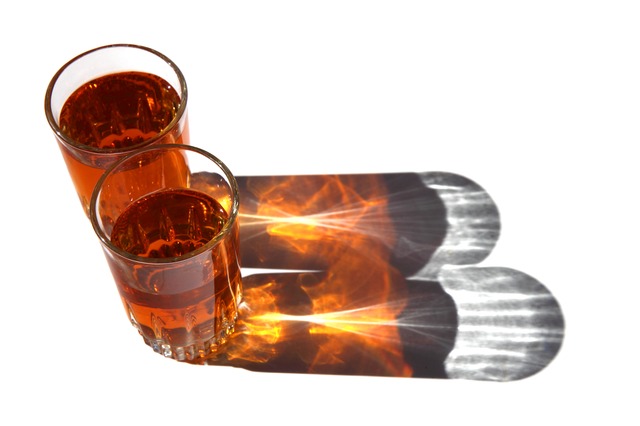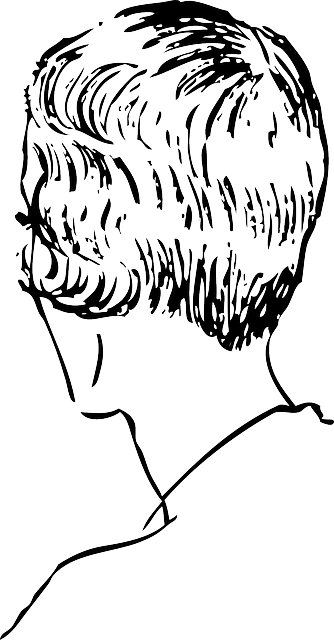القوقاز
القوقاز أوالقفقاس هي المنطقة الجبلية الواقعة بين بحر القزوين والبحر الأسود وتقسمها جبال القوقاز. تتشارك فيها الجمهوريات الجنوبية لروسيا وجورجيا وأرمينيا وأذربيجان. يعيش في تلك البلاد نحو33 مليون نسمة. It is home to the Caucasus Mountains, including the Greater Caucasus mountain range, which has historically been considered a natural barrier between Eastern Europe and Western Asia.
Europe's highest mountain, Mount Elbrus, at 5,642 مترs (18,510 قدم) is located in the west part of the Greater Caucasus mountain range. On the southern side, the Lesser Caucasus includes the Javakheti Plateau and grows into the Armenian highlands, part of which is located in هجريا.
The Caucasus region is separated into northern and southern parts – the North Caucasus (Ciscaucasus) and Transcaucasus (South Caucasus), respectively. The Greater Caucasus mountain range in the north is within the Russian Federation, while the Lesser Caucasus mountain range in the south is occupied by several independent states, namely Georgia, Armenia, Azerbaijan, and the partially recognised جمهورية أرتساخ.
The region is known for its linguistic diversity: aside from Indo-European and Turkic languages, the Kartvelian, Northwest Caucasian, and Northeast Caucasian families are indigenous to the area.
أسماء الأماكن
The term Caucasus is not only used for the mountains themselves but also includes Ciscaucasia (which is part of the Russian Federation) and Transcaucasia. According to Alexander Mikaberidze, Transcaucasia is a "Russo-centric" term.
Pliny the Elder's Natural History (77–79 AD) derives the name of the Caucasus from Scythian kroy-khasis ("ice-shining, white with snow"). German linguist Paul Kretschmer notes that the Latvian word Kruvesis also means "ice".
In the Tale of Past Years (1113 AD), it is stated that Old East Slavic Кавкасийскыѣ горы (Kavkasijskyě gory) came from Ancient Greek Καύκασος (Kaukasos; later Greek pronunciation Kafkasos)), which, according to M. A. Yuyukin, is a compound word that can be interpreted as the "Seagull's Mountain" (καύ-: καύαξ, καύηξ, ηκος ο, κήξ, κηϋξ "a kind of seagull" + the reconstructed *κάσος η "mountain" or "rock" richly attested both in place and personal names.)
According to German philologists Otto Schrader and Alfons A. Nehring, the Ancient Greek word Καύκασος (Kaukasos) is connected to Gothic Hauhs ("high") as well as Lithuanian Kaũkas ("hillock") and Kaukarà ("hill, top"). British linguist Adrian Room points out that Kau- also means "mountain" in Pelasgian.
The Transcaucasus region and Dagestan were the furthest points of Parthian and later Sasanian expansions, with areas to the north of the Greater Caucasus range practically impregnable. The mythological Mount Qaf, the world's highest mountain that ancient Iranian lore shrouded in mystery, was said to be situated in this region. In Middle Persian sources of the Sasanian era, the Caucasus range was referred to as Kaf Kof. The term resurfaced in Iranian tradition later on in a variant form when Ferdowsi, in his Shahnameh, referred to the Caucasus mountains as Kōh-i Kāf. "Most of the modern names of the Caucasus originate from the Greek Kaukasos (Lat., Caucasus) and the Middle Persian Kaf Kof".
"The earliest etymon" of the name Caucasus comes from Kaz-kaz, the Hittite designation of the "inhabitants of the southern coast of the Black Sea".
It was also noted that in Nakh Ков гас (Kov gas) means "gateway to steppe"
التسميات المحلية والتسميات الخارجية
The modern name for the region is usually similar in the many languages, and is generally between Kavkaz and Kawkaz.
- بالأبخازية: კავკაზ კავკაზ
- نطقب:Lang-ady Kʺaukʺaz/s
- بالأذربيجانية: Qafqaz
- العربية: القوقاز al-Qawqāz
- بالأرمينية: Կովկաս Kovkas
- Avar: Кавказ Kawkaz
- بالشيشانية: Кавказ Kavkaz
- بالجورجية: კავკასია K'avk'asia
- بالألمانية: Kaukasien
- باليونانية: Καύκασος Káfkasos
- بالعبرية: קווקז Qavqaz
- Ingush: Кавказ Kawkaz
- نطقب:Lang-krc Kavkaz
- نطقب:Lang-kum Qawqaz
- كردية: Qefqasya/Qefqas
- نطقب:Lang-lbe Kkawkkaz
- لزگي: Къавкъаз K'awk'az
- نطقب:Lang-xmf K'avk'acia
- اوستية: Кавказ Kavkaz
- فارسية: قفقاز Qafqāz
- بالروسية: Кавказ Kavkaz
- نطقب:Lang-rut Kavkaz
- (بالهجرية: Kafkaslar/Kafkasya)
- بالاوكرانية: Кавказ Kavkaz
الجغرافيا
القوقاز بلاد غنية بالموارد الطبيعية التي منها النفط والفحم والغاز الطبيعي. بالاضافة إلى المواد المعدنية مثل الحديد والمنگنيز والنحاس والرصاص والتنجستن والموليبدينوم والزنك.
North Caucasus region is known as the Ciscaucasus, whereas the South Caucasus region is commonly known as the Transcaucasus.
The Ciscaucasus contains most of the Greater Caucasus mountain range. It consists of Southern Russia, mainly the North Caucasian Federal District's autonomous republics, and the northernmost parts of Georgia and Azerbaijan. The Ciscaucasus lies between the Black Sea to its west, the Caspian Sea to its east, and borders the Southern Federal District to its north. The two Federal Districts are collectively referred to as "Southern Russia."
The Transcaucasus borders the Greater Caucasus range and Southern Russia to its north, the Black Sea and هجريا to its west, the Caspian Sea to its east, and Iran to its south. It contains the Lesser Caucasus mountain range and surrounding lowlands. All of Armenia, Azerbaijan (excluding the northernmost parts) and Georgia (excluding the northernmost parts) are in the South Caucasus.
The watershed along the Greater Caucasus range is generally perceived to be the dividing line between Europe and Southwest Asia. The highest peak in the Caucasus is Mount Elbrus (5,642 meters) located in western Ciscaucasus, and is considered as the highest point in Europe.
The Caucasus is one of the most linguistically and culturally diverse regions on Earth.[] The nation states that comprise the Caucasus today are the post-Soviet states Georgia (including Adjara), Azerbaijan (including Nakhchivan), Armenia, and the Russian Federation. The Russian divisions include Dagestan, Chechnya, Ingushetia, North Ossetia–Alania, Kabardino–Balkaria, Karachay–Cherkessia, Adygea, Krasnodar Krai and Stavropol Krai, in clockwise order.
Three territories in the region claim independence but are recognized as such by only a handful entities: Artsakh, Abkhazia and South Ossetia. Abkhazia and South Ossetia are recognized by the world community as part of Georgia, and Artsakh as part of Azerbaijan.
Chechnya's capital Grozny
Armenia's capital Yerevan
Georgia's capital Tbilisi
Azerbaijan's capital Baku
الديمغرافيا
وكان يقصد به العرق الأبيض، حيث تظن بعض النظريات حتى العرق الأبيض أصله من القوقاز.
ويقصد به حالياً العرق الذي يمثل السكان الأصليين للقوقاز منذ عصور ما قبل الميلاد، وهم ينقسمون حسب أصولهم إلى:
- القوقازيون الشماليون:
ويقطنون القسم الشمالي من القوقاز، وهم:
- الأديغة: بقبائلهم الشابسوغ والقبردي والبجةدوغ والأبزاخ وغيرهم وهم اثنا عشرة قبيلة رئيسية.
- الشيشان: وهم الشيشان والأنغوش حالياً.
- الوبيخ: وقد استشهد أغلبهم في الحرب مع الروس ولم يبق منهم سوى ما يقارب المئة.
- الأبخاز: ومنهم الأباظة.
- قسم من قبائل الداغستان: ومنهم الأوار.
والقوقازيون الشماليون يقسمون أيضاً حسب أصول لغتهم إلى قسمين شرقي وغربي رغم حتى بعض فهماء اللغات يرجعونهم إلى أصل واحد (راجع القسم الانكليزي من لغات القوقاز).
- القوقازيون الجنوبيون:
ويقطنون القسم الجنوبي من القوقاز، وهم:
- الاوسيتيون: ولهم الآن جمهوريتان أوسيتيا الشمالية وأوسيتيا الجنوبية.
- الكرج: وهم الجورجيون حالياً.
- الأرمن: وهم في أرمينيا حالياً.
اللغات القوقازية
وتنقسم حسب أصولها إلى:
-
اللغات الشركسية (وتسمى بلغات شمال القوقاز):
- الأديغية: بلهجة البجة-دوغ ولهجة القبردي ولهجة الشابسوغ ولهجة الأبزاخ ..
- الشيشانية: بلهجتي الشيشان والأنغوش وهما لغة واحدة بلهجتين.
- الأبخازية: وهي لغة إقليم أبخازيا.
- الوبيخية: وهي لغة لا يستعملها سوى عدد قليل من الوبيخ الذين استشهد غالبيتهم في الحرب ضد روسيا القيصرية، ولم يبق منهم سوى أقل من واحد بالمئة مما كانوا عليه قبل الحرب.(توفي آخر متحدث بها في أواسط القرن العشرين)
- الأوارية: وهي لغة قوقازية داغستانية قديمة الأصل ولها عدة لهجات، وهي تختلف عن اللغة الآفارية الهجرية الأصل، كما أنها تختلف عن اللغات الداغستانية الأخرى وهي أقرب إلى الشيشانية في هجريب جملها.
التاريخ
Located on the peripheries of هجريا, Iran, and Russia, the region has been an arena for political, military, religious, and cultural rivalries and expansionism for centuries. Throughout its history, the Caucasus was usually incorporated into the Iranian world. At the beginning of the 19th century, the Russian Empire conquered the territory from Qajar Iran.
قبل التاريخ
The territory of the Caucasus region was inhabited by Homo erectus since the Paleolithic Era. In 1991, early human (that is, hominin) fossils dating back 1.8 million years were found at the Dmanisi archaeological site in Georgia. Scientists now classify the assemblage of fossil skeletons as the subspecies Homo erectus georgicus.
The site yields the earliest unequivocal evidence for presence of early humans outside the African continent; and the Dmanisi skulls are the five oldest hominins ever found outside Africa.
القِدم
Kura–Araxes culture from about 4000 BC until about 2000 BC enveloped a vast area approximately 1,000 km by 500 km, and mostly encompassed, on modern-day territories, the Southern Caucasus (except western Georgia), northwestern Iran, the northeastern Caucasus, eastern Turkey, and as far as Syria.
Under Ashurbanipal (669–627 BC) the boundaries of the Assyrian Empire reached as far as the Caucasus Mountains. Later ancient kingdoms of the region included Armenia, Albania, Colchis and Iberia, among others. These kingdoms were later incorporated into various Iranian empires, including Media, the Achaemenid Empire, Parthia, and the Sassanid Empire, who would altogether rule the Caucasus for many hundreds of years. In 95–55 BC under the reign of Armenian king Tigranes the Great, the Kingdom of Armenia included Kingdom of Armenia, vassals Iberia, Albania, Parthia, Atropatene, Mesopotamia, Cappadocia, Cilicia, Syria, Nabataean kingdom, and Judea. By the time of the first century BC, Zoroastrianism had become the dominant religion of the region; however, the region would go through two other religious transformations. Owing to the strong rivalry between Persia and Rome, and later Byzantium, the latter would invade the region several times, although it was never able to hold the region.
العصور الوسطى
As the Arsacid dynasty of Armenia (an eponymous branch of the Arsacid dynasty of Parthia) was the first nation to adopt Christianity as state religion (in 301 AD), and Caucasian Albania and Georgia had become Christian entities, Christianity began to overtake Zoroastrianism and pagan beliefs. With the Muslim conquest of Persia, large parts of the region came under the rule of the Arabs, and Islam penetrated into the region.
In the 10th century, the Alans (proto-Ossetians) founded the Kingdom of Alania, that flourished in the Northern Caucasus, roughly in the location of latter-day Circassia and modern North Ossetia–Alania, until its destruction by the Mongol invasion in 1238–39.
During the Middle Ages Bagratid Armenia, Kingdom of Tashir-Dzoraget, Kingdom of Syunik and Principality of Khachen organized local Armenian population facing multiple threats after the fall of antique Kingdom of Armenia. Caucasian Albania maintained close ties with Armenia and the Church of Caucasian Albania shared same Christian dogmas with the Armenian Apostolic Church and had a tradition of their Catholicos being ordained through the Patriarch of Armenia.
In the 12th century, the Georgian king David the Builder drove the Muslims out from Caucasus and made the Kingdom of Georgia a strong regional power. In 1194–1204 Georgian Queen Tamar's armies crushed new Seljuk Turkish invasions from the south-east and south and launched several successful campaigns into Seljuk Turkish-controlled Southern Armenia. The Georgian Kingdom continued military campaigns in the Caucasus region. As a result of her military campaigns and the temporary fall of the Byzantine Empire in 1204, Georgia became the strongest Christian state in the whole Near East area, encompassing most of the Caucasus stretching from Northern Iran and Northeastern Turkey to the North Caucasus.
The Caucasus region was conquered by the Ottomans, Mongols, local kingdoms and khanates, as well as, once again, Iran.
Etchmiadzin Cathedral in Armenia, original building completed in 303 AD, a religious centre of Armenia. It is a UNESCO World Heritage Site.
Svetitskhoveli Cathedral in Georgia, original building completed in the 4th century. It was a religious centre of monarchical Georgia. It is a UNESCO World Heritage Site.
Northwest Caucasus caftan, 8-10th century, from the region of Alania.
Svaneti defensive tower houses
القوقاز في التاريخ العربي
عهد الجغرافيون والمؤرخون المسلمون القدامى أرض القوقاز وخاصة الجزء الجنوبي منه، بأسم بلاد الرحاب، وهواسم رائج في خطهم، ويضم عدة دول اليوم تضم أذربيجان وأرمينيا وجورجيا وداغستان وأجزاء أخرى من روسيا ، وقد اشتهرت فيها مدن فتحها وشيد عمارتها الفاتحون العرب مثل مدن دربند أو(باب الأبواب)، وبرذعة، ومراغة، وشروان، وتبريز وغيرها.
وكان أول من ولج أرمينيا من المسلمين هوالقائد عياض بن غنم في خلافة عمر بن الخطاب حيث استطاعت هذه الحملة من فتح مدينة بدليس ، وأول من ولج داغستان هوالقائد سراقة بن عمرووفتح مدينة دربند.
أما أشهر المدن القوقازية لدى العرب في عهد الخليفة الراشد عثمان بن عفان وكذالك الخلافة الأموية فهي مدينة دربند أوكما يسمونها (باب الابواب) وعهدت أيضا بـ(الباب)، وهي تقع في داغستان اليوم، وتطل على بحر قزوين، نطق عنها ياقوت الحموي في معجم البلدان: (وباب الأبواب على بحر طبرستان وهوبحر الخزر وهي مدينة أكبر من أردبيل نحوميلين في ميلين ولهم زروع كثيرة وثمار قليلة إلا ما يحمل إليهم من النواحي، وعلى المدينة سور من الحجارة ممتد من الجبل طولا في غير ذي عرض لا مسلك على جبلها إلى بلاد المسلمين لدروس الطرق وصعوبة المسالك من بلاد الكفر إلى بلاد المسلمين)، وأضاف: (وهي محكمة البناء موثقة الأساس من بناء أنوشروان وهي أحد الثغور الجليلة العظيمة لأنها كثيرة الأعداء الذين حلوا بها من أمم شتى وألسنة مختلفة).
ثم أصبحت دربند بعد ضعف الخلافة العباسية مقرا للأمراء العرب من سلالة هاشم بن سراقة السلمي.
أما مدينة برذعة وتقع في أذربيجان اليوم، وصفها المؤرخين بأنها قصبة أذربيجان، وتقع في أقصاها، نطق الإصطخري عنها: (برذعة مدينة كبيرة جدا أكثر من فرسخ في فرسخ، وهي نزهة خصبة كثيرة الغرس والثمار جدا، وليس ما بين العراق وخراسان بعد الري وأصبهان مدينة أكبر ولا أخصب ولا أحسن موضعا من أفق برذعة)، وفي برذعة يقع قبر القائد الشهير يزيد بن مزيد الشيباني، والذي استطاع أبناؤه فيما بعد تأسيس دولة في المنطقة كانت لها آثارها الباقية حتى اليوم.
أما مدينة مراغة فقد وصفها ياقوت بأنها أعظم وأشهر بلاد أذربيجان، ويضيف عن سيرة بنائها بأن: (عسكر مروان بن محمد وهووالي إرمينية وأذربيجان في عهد الخليفة هشام بن عبد الملك عندما أنصرف من غزومرقان وجيلان وكان قريبا من مراغة وكان فيها أوحال كثيرة فكانت دوابهم تتمرغ فيها فجعلوا يقولون ابنوا قرية المراغة وهذه قرية المراغة فحذف الناس القرية ونطقوا مراغة وكان أهلها أتبعوها إلى مروان فابتناها وتألف أهلها فكثروا فيها وعمروها)، وفي خلافة هارون الرشيد ولى خزيمة بن خازم بن خزيمة التميمي والياً على أرمينية وأَذْرَبيجان, فبنى سور مراغة وأنزلها جنداً كثيفاً، ولما أعرب بابك الخرمي ثورته على الخلافة العباسية سنة 201 هـ من جبال أَذربيجان، لجأ الناس إِلى مراغة فنزلوها وتحصنوا فيها، ويضيف ياقوت: (وبها آثار وعمائر ومدارس وخانكاهات حسنة وقد كان فيها أدباء وشعراء ومحدثون وفقهاء).
أما مدينة شروان وهي مدينة من نواحي باب الأبواب، وقصبتها شماخي كما يروي المؤرخين، وهي بالقرب من بحر قزوين، وقد عهدت شروان بكونها مركزا دينيا كبيرا في بلاد الرحاب وخرج منها الكثير من الفقهاء والأدباء من العرب وغيرهم، وكانت مقرا لإمارة بني يزيد بن مزيد الشيباني، وإلى شروان تنسب عربية تلك البلاد فينطق: (عربية شروان)، والتي كانت لهجة عربية يتحدث بها سكان تلك البلاد، وظلت متداولة حتى أواسط القرن العشرين قبل حتى تذوب فيما ذاب من لغات وثقافات ضمن إطار الإتحاد السوفييتي السابق.
أما مدينة تبريز، وتقع اليوم ضمن أذربيجان الإيرانية، نطق عنها ياقوت: (أشهر مدن أذربيجان وهي مدينة عامرة حسناء ذات أسوار محكمة بالآجر والجص وفي وسطها عدة أنهار جارية والبساتين محيطة بها والفواكه بها رخيصة)، وأضاف: (وكانت تبريز قرية حتى نزلها الرواد الأزدي المتغلب على أذربيجان في أيام الخليفة المتوكل العباسي ثم إذا الوجناء بن الرواد الأزدي بنى بها هووإخوته قصورأ وحصنها بسور فنزلها الناس معه)، وفيها أقام بنوالرواد من قبيلة الأزد، وكانت لهم فيها إمارة ونفوذ.
أما مدينة تفليس، وتعد اليوم عاصمة جورجيا، نطق مشعر بن مهلهل الشاعر في رسالته: (وسرت من شروان في بلاد الأرمن حتى انتهيت إلى تفليس وهي مدينة لا إسلام وراءها يجري في وسطها نهر ينطق له الكر يصب في البحر وفيها غروب تطحن وعليها سور عظيم وبها حمامات شديدة الحر لا توقد ولا يستقي لها ماء)، وافتتحها المسلمون في أيام عثمان بن عفان رضي الله عنه، وقد شهدت تفليس حروبا متواصلة بين المسلمين والكرج والأرمن والخزر، وخضعت للصفويين والعثمانيين ثم للروس .
وإضافة إلى المدن التي ذكرت؛ اشتهرت في بلاد الرحاب مدن أخرى وقرى كثيرة، كان لها ذكر في التاريخ الإسلامي، وخرجت الكثير من القادة والفقهاء والفهماء والأدباء .
كانت سياسة الدولة الإسلامية في القرون الأولى تدفع باتجاه توطين القبائل العربية المشاركة في فتوح البلاد المتنوعة لعدة أسباب، على رأسها نشر الدين الإسلامي واللغة العربية، ثم كيقد يكونوا درعا واقيا لحدود الدولة وأطرافها، وقد لعبت تلك القبائل العربية دورا مركزيا في نشر الإسلام والدفاع عن البلدان المفتوحة، وأنشئوا دولا وإمارات ساهمت في نهضة وتطور تلك البلدان، إلا أنها تفككت وظهرت إمارات إسلامية أخرى للأكراد والهجر لا سيما بعد ظهور السلاجقة.
وذكر البلاذري في (فتوح البلدان) حتى العرب لما نزلوا أذربيجان نزعت إليها عشائرها من البصرة والكوفة والشام، وغلب جميع قوم على ما أمكنهم وابتاع بعضهم من العجم الأراضي، وألجئت إليهم القرى للخفارة، فصار أهلها مزارعين لهم. في عهد علي بن أبي طالب رضي الله عنه ولى أذربيجان الأشعث بن قيس الكندي، فأنزل مدينة أردبيل جماعة من أهل العطاء والديوان من العرب ومصرها وبنى مسجدها. وسكن تلك البلاد الكثير من الصحابة والتابعين، ولكن بداية التوطين الحقيقية كانت في زمن معاوية بن أبي سفيان حيث قدم أكثر من ألفين من أبناء القبائل العربية ونزلوا في منطقة نطقي قلا وتملكوا أراضي زراعية إضافة إلى مهامهم القتالية.
وفي عهد هشام بن عبد الملك هبط أذربيجان ما يقارب الخمس وعشرون ألف من العرب وتوطنوا فيها.
وفي عهد الخليفة العباسي أبوجعفر المنصور قدم تلك البلاد سبعة آلاف مقاتل من العرب سكنوا هنالك، وأصبحوا فيما بعد جزءا من نسيجها السكاني، وكان الوالي فيها بتلك الفترة هويزيد بن أسيد السلمي.
واستمر تدفق القبائل العربية على أذربيجان وأرمينيا لا سيما في عهد الدولة الحمدانية التي وصل نفوذها إلى تلك البقاع لبعض الوقت، ونظرا لكثرة العرب النازلين هناك وتنوع قبائلهم فقد نشبت الكثير من الخلافات والصراعات القبلية بين تكتلاتهم الرئيسية: اليمانية وربيعة ومضر، وكان لها أثر سيىء فيما بعد على وحدتهم واستقرارهم وأدت إلى ضعف قوتهم العسكرية ونفوذهم السياسي، وظهور منافسين أقوياء لهم في المنطقة لا سيما بعدما أرهقتهم حروبهم المستمرة مع الخزر والصنطقبة والأرمن والكرج.
ومن أبرز القبائل العربية التي سكنت أذربيجان وجنوب القوقاز التي تعهد ببلاد الرحاب:
- الأزد: ومن أشهر شيوخهم الرواد الأزدي الذي هبط تبريز، ثم خلفه ولده الوجناء بن الرواد، وقد بنى في تبريز أبنية وحصنها بسور.
- بنوهمدان: ونزلوا الميانج وخلباثا، وقد مدن عبد الله بن جعفر الهمداني محلته بالميانج ، وصير للسلطان بها منبرا.
- بنوالأود: وقد نزلوا كورة برزة، وكان لهم نفوذ فيها.
- طيء: ونزلوا قرية نريز؛ نزلها منهم مر بن عمروالطائي، فبنى بها وأسكنها ولده ثُم أنهم بنوا بها قصورا ومدنوها، وبنوا سوق جابروان وكبروه وأفرده السلطان لهم، فصاروا يتولونه دون عامل أذربيجان على ما ذكره البلاذري.
- كندة: ونزلوا قرية سراة وعمروها.
- بنوالبعيث: ونزلوا المرند وكانت قرية صغيرة، فنزلها حلبس أبوالبعيث، ثم ابنه محمد بن البعيث، وبنى بها قصورا، ثم قَد عصى في خلافة المتوكل العباسي فحاربه بغا الصغير أحد قادة الخليفة، حتى ظفر به وحمله إلى سامراء، وهدم حائط مرند.
- بنوشيبان: وكان لهم حضور قوي في بلاد الرحاب، ومن أشهرهم يزيد بن مزيد الشيباني الذي أقام أبناؤه دولة قوية في مناطق واسعة من داغستان وأذربيجان، وكان مركزها شروان.
- بنوسليم: ومنهم قادة عسكريون ساهموا في فتح تلك البلاد من أشهرهم عتبة بن فرقد السلمي، ثم أسس أحد أمرائهم هناك وهوهاشم بن سراقة السلمي إمارة تولى أبناؤه من بعده الحكم فيها، وكانت عاصمتها دربند.
- القيسية: وكان لهم تواجد كثيف في منطقة ملاذكرد.
- قبائل أخرى كثيرة، كتغلب وبني الجحاف والأشعريين وغيرهم، نزلوا في عدة مدن وكانت لهم إمارات في مدن ناخجوان، دبيل، نطقيقلا، أرجيش، بيركري، أرجكة، منازكرد، نبركرد، باذغيش وسالماس وغيرها.
وبقي العرب في هذه المناطق حتى لعبت الصراعات القبلية بين القبائل المتنوعة، والحروب المستمرة مع الشعوب المجاورة في ضعف قوة العرب وذوبان أغلبهم في شعوب تلك البلدان، حيث نشأت إمارات ديلمية وكردية، كبني مسافر وبني شداد وبني كاكويه وغيرهم، لغاية وصول الزحف السلجوقي الذي أسهم في تتريك أذربيجان وأجزاء من داغستان، وكان للغزوالمغولي دوره المدمر في ذلك.
وكان من أشهر القادة العرب الذين شاركوا في فتح هذه المناطق هم بالترتيب الزمني:
- عياض بن غنم أول فاتح لأرمينيا في عهد عثمان بن عفان
- سراقة بن عمروفاتح دربند في داغستان وأول من ولج داغستان في عهد عمر بن الخطاب
- حذيفة بن أسيد قائد حملة جبال اللان في عهد عمر بن الخطاب
- عتبة بن فرقد السلمي فاتح أذربيجان في عهد عمر بن الخطاب
- بكير بن عبد الله فتح جزء من أذربيجان
- حذيفة بن اليمان شارك في فتوحات أذربيجان وأحد المسقطين على الصلح معهم في عهد عمر بن الخطاب
- الوليد بن عقبة قاد الجيش الذي قضى على ثورة أذربيجان في عهد عثمان بن عفان
- عبد الله بن شبيل الأحمسي
- قريظة بن كعب الأنصاري
- جرير بن عبد الله البجلي قاد حملة للقضاء على ثورة أذربيجان وقتل ملكهم
- سلمان بن ربيعة الباهلي من أشهر القادة الذين فتحوا القوقاز وقتل فيها في مدينة بلنجر في داغستان عام 28 هـ
- عبد الرحمن بن ربيعة الباهلي شارك في فتوحات القوقاز وقتل بعد مقتل أخيه سلمان في بلنجر في عهد عثمان بن عفان عام 32 هـ
- الأشعث بن قيس والي أذربيجان في عهد علي بن أبي طالب
- حبيب بن مسلمة قائد فتوحات أرمينيا الكبرى في عهد معاوية بن أبي سفيان
- محمد بن مروان والي أرمينيا والجزيرة الفراتية في عهد عبد الملك بن مروان
- الجراح بن عبد الله الحكمي اغتال في داغستان بعد محاولتة اخماد ثورات الخزر والأتراك في القوقاز في عهد هشام بن عبد الملك
- سعيد بن عمروالحرشي الذي قاد حملة ثأر لمقتل الجراح بن عبد الله الحكمي في داغستان والقوقاز وحرر أسرى المسلمين.
- مسلمة بن عبد الملك قاد حملة كبرى إكمالاً لحملة سعيد الحرشي وأستطاع القضاء على ثورات الخزر والهجر بشكل نهائي.
- مروان بن محمد والي أرمينيا وأذربيجان وأجزاء من القوقاز والجزيرة الفراتية وموطد الحكم الإسلامي في القوقاز.
- يزيد بن أسيد السلمي والي أرمينيا في عهد أبوجعفر المنصور وأستطاع التوسع شمالا.
العصر الحديث
Up to and including the early 19th century, the Southern Caucasus and southern Dagestan all formed part of the Persian Empire. In 1813 and 1828 by the Treaty of Gulistan and the Treaty of Turkmenchay respectively, the Persians were forced to irrevocably cede the Southern Caucasus and Dagestan to Imperial Russia. In the ensuing years after these gains, the Russians took the remaining part of the Southern Caucasus, comprising western Georgia, through several wars from the Ottoman Empire.
In the second half of the 19th century, the Russian Empire also conquered the Northern Caucasus. In the aftermath of the Caucasian Wars, an ethnic cleansing of Circassians was performed by Russia in which the indigenous peoples of this region, mostly Circassians, were expelled from their homeland and forced to move primarily to the Ottoman Empire.
In the 1940s, around 480,000 Chechens and Ingush, 120,000 Karachay–Balkars and Meskhetian Turks, thousands of Kalmyks, and 200,000 Kurds in Nakchivan and Caucasus Germans were deported en masse to Central Asia and Siberia. About a quarter of them died.
The Southern Caucasus region was unified as a single political entity twice – during the Russian Civil War (Transcaucasian Democratic Federative Republic) fromتسعة April 1918 to 26 May 1918, and under the Soviet rule (Transcaucasian SFSR) from 12 March 1922 toخمسة December 1936. Following the dissolution of the Soviet Union in 1991, Georgia, Azerbaijan and Armenia became independent nations.
The region has been subject to various territorial disputes since the collapse of the Soviet Union, leading to the Nagorno-Karabakh War (1988–1994), the East Prigorodny Conflict (1989–1991), the War in Abkhazia (1992–93), the First Chechen War (1994–1996), the Second Chechen War (1999–2009), and the 2008 South Ossetia War.
الأساطير
In Greek mythology the Caucasus, or Kaukasos, was one of the pillars supporting the world. After presenting man with the gift of fire, Prometheus (or Amirani in the Georgian version) was chained there by Zeus, to have his liver eaten daily by an eagle as punishment for defying Zeus' wish to keep the "secret of fire" from humans.
In Persian mythology the Caucasus might be associated with the mythic Mount Qaf which is believed to surround the known world. It is the battlefield of Saoshyant and the nest of the Simurgh.
The Roman poet Ovid placed the Caucasus in Scythia and depicted it as a cold and stony mountain which was the abode of personified hunger. The Greek hero Jason sailed to the west coast of the Caucasus in pursuit of the Golden Fleece, and there met Medea, a daughter of King Aeëtes of Colchis.
مصادر الطاقة والمعادن
Caucasus has many economically important minerals and energy resources, such as: alunite, مضى, كروم، نحاس، خام الحديد, زئبق، منگنيز, موليبدنم, رصاص, تنگستن, يورانيوم، زنك، نفط, غاز طبيعي، وفحم (both hard and brown).
طالع أيضاً
- بوابة قوقاز
- خانيات القوقاز
- ثقافة أرمنيا
- ثقافة أذربيجان
- ثقافة جورجيا
- Community for Democracy and Rights of Nations
- شرق أوروپا
- Eastern Partnership
- Euronest Parliamentary Assembly
- الاتحاد الاقتصادي الأوراسي
- الإسلام في روسيا
- پروميثية Prometheism
- مناطق أوروپا Regions of Europe
- أمم عابرة للقارات
- عبر القوقاز Transcaucasia
- شعوب القوقاز
- تاريخ القوقاز
- جنوب القوقاز
- لغات القوقاز
- الحرب الروسية الچركسية
المصادر
- Caucasus: A Journey to the Land Between Christianity and Islam By Nicholas Griffin
- Small Nations and Great Powers: A Study of Ethnopolitical Conflict in the Caucasus By Svante E. Cornell
- The Caucasus By Ivan Golovin
- ^ "Caucasus - region and mountains, Eurasia". Encyclopedia Britannica. Retrieved 2018-11-26.
-
^ "Caucasus - region and mountains, Eurasia". Encyclopedia Britannica. Retrieved 2018-11-26.
West of the Kura-Aras Lowland rises the Lesser Caucasus range, which is extended southward by the Dzhavakhet Range and the Armenian Highland, the latter extending southwestward into Turkey.
-
^ "Caucasus - region and mountains, Eurasia". Encyclopedia Britannica. Retrieved 2018-11-26.
Caucasia includes not only the mountain ranges of the Caucasus proper but also the country immediately north and south of them. The land north of the Greater Caucasus is called Ciscaucasia (Predkavkazye, or “Hither Caucasia”) and that south of it is Transcaucasia (Zakavkazye, or “Farther Caucasia”).
- ^ Mikaberidze, Alexander (2015-02-06). Historical Dictionary of Georgia. Rowman & Littlefield. ISBN .
- ^ "Natural History," book six, chap. XVII
- ^ Kretschmer, Paul (1928). "Weiteres zur Urgeschichte der Inder" [More about the Pre-History of the Indians]. Zeitschrift für vergleichende Sprachforschung auf dem Gebiete der indogermanischen Sprachen [Journal of Comparative Linguistic Research into Indo-European Philology] (in German). 55: 75–103.CS1 maint: unrecognized language (link)
- ^ Kretschmer, Paul (1930). "Zeitschrift für vergleichende Sprachforschung auf dem Gebiete der indogermanischen Sprachen [Journal of Comparative Linguistic Research into Indo-European Philology]". 57: 251–255.
- ^ Vasmer, Max Julius Friedrich (1953–1958). "Russisches etymologisches Wörterbuch" [Russian Etymological Dictionary]. Indogermanische Bibliothek herausgegeben von Hans Krahe. Reihe 2: Wörterbüche [Indo-European Library Edited by Hans Krahe. Series 2: Dictionaries] (in German). 1. Heidelberg: Carl Winter.CS1 maint: unrecognized language (link)
- ^ Yuyukin, M. A. (18–20 June 2012). "О происхождении названия Кавказ".: 893–899 and 919.
- ^ Schrader, Otto (1901). Reallexikon der indogermanischen Altertumskunde: Grundzüge einer Kultur- und Völkergeschichte Alteuropas [Real Lexicon of the Indo-Germanic Antiquity Studies: Basic Principles of a Cultural and People's History of Ancient Europe] (in German). Strasbourg: Karl J. Trübner.CS1 maint: unrecognized language (link)
- ^ Room, Adrian (1997). . Jefferson, NC: McFarland & Company. ISBN .
- ^ Gocheleishvili, Iago. "Caucasus, pre-900/1500". Encyclopaedia of Islam, THREE. Retrieved 3 June 2018.
- ^ Bolatojha J. "Древняя родина Кавкасов [The Ancient Homeland of the Caucasus]", p. 49, 2006.
- ^ Multiple Authors. "Caucasus and Iran". Encyclopædia Iranica. Retrieved 2012-09-03.
-
^ Derbyshire, David (9 September 2009). "Ancient Skeletons Discovered in Georgia Threaten to Overturn the Theory of Human Evolution". Mail Online.
Georgia may have been the cradle of the first Europeans...Archaeologists now believe that our ancestors left for Europe at least 1.8 million years ago, before returning to Africa and developing into Homo Sapiens...The Dmanisi bones may have belonged to an early Homo erectus which lived in Georgia before moving on to the rest of Europe.
- ^ Vekua, A., Lordkipanidze, D., Rightmire, G. P., Agusti, J., Ferring, R., Maisuradze, G., et al. (2002). A new skull of early Homo from Dmanisi, Georgia. Science, 297:85–9.
-
^ Hunter, Shireen; et al. (2004). Islam in Russia: The Politics of Identity and Security. M.E. Sharpe. p. 3.
(..) It is difficult to establish exactly when Islam first appeared in Russia because the lands that Islam penetrated early in its expansion were not part of Russia at the time, but were later incorporated into the expanding Russian Empire. Islam reached the Caucasus region in the middle of the seventh century as part of the Arab conquest of the Iranian Sassanian Empire.
- ^ "Яндекс.Словари". yandex.ru.
- ^ "Caucasian Albanian Church celebrates its 1700th Anniversary". The Georgian Church for English Speakers (in الإنجليزية). 2013-08-09. Retrieved 2018-03-02.
- ^ Timothy C. Dowling pp 728–730 ABC-CLIO, 2 dec. 2014. ISBN 978-1598849486
- ^ Suny, page 64
- ^ Allen F. Chew. "An Atlas of Russian History: Eleven Centuries of Changing Borders", Yale University Press, 1970, p. 74
- ^ Yemelianova, Galina, Islam nationalism and state in the Muslim Caucasus. Caucasus Survey, April 2014. p. 3
- ^ Memoirs of Miliutin, "the plan of action decided upon for 1860 was to cleanse [ochistit'] the mountain zone of its indigenous population", per Richmond, W. The Northwest Caucasus: Past, Present, and Future. Routledge. 2008.
- ^ Weitz, Eric D. (2003). . Princeton University Press. p. 82. ISBN .
وصلات خارجية
- الخريطة العرقية للقوقاز
- (Caucasian Review of International Affairs - an academic journal on the South Caucasus)
- BBC News: North Caucasus at a glance, September 8, 2005
- United Nations Environment Programme map: Landcover of the Caucasus
- United Nations Environment Programme map: Population density of the Caucasus
- Caucasus and Iran entry in Encyclopaedia Iranica
- University of Turin-Observatory on Caucasus
| مناطق العالم | |||||||||||||||||||||||||
|---|---|---|---|---|---|---|---|---|---|---|---|---|---|---|---|---|---|---|---|---|---|---|---|---|---|
|
|
||||||||||||||||||||||||
| انظر أيضاً قارات العالم | |||||||||||||||||||||||||




